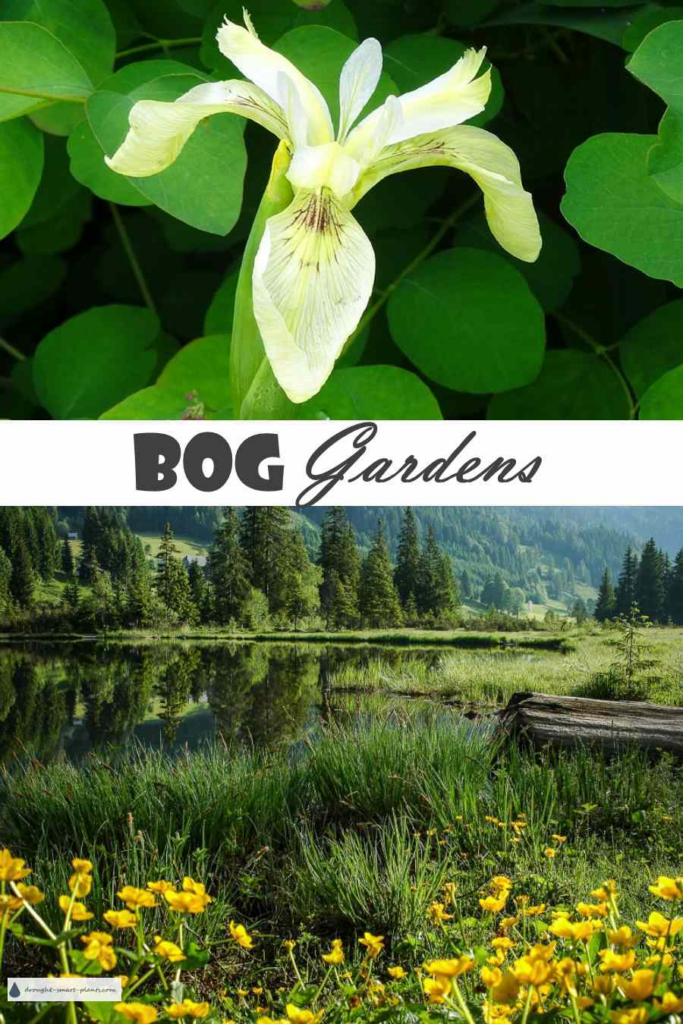Your very own marsh in miniature
Bog gardens or marshes are usually built near to a pond so they stay continuously moist.
Many bog garden plants must have wet feet at all times, others only require seasonal moisture.

Choose the bog plants that fit your overall scheme and those that have similar requirements for depth of water, the depth of the soil or gravel, the amount of water whether seasonal or year round and plants height and spread.
Many of these types of plants will also grow in rain gardens and meadows, in combination with those plants that prefer dryer conditions.
In many cases in natural gardens seasonal inundation is part of the life cycle, with spring run off tapering off to dryer conditions for flowering and seed production over the summer and fall.

Soil for Bog Gardens
In natural gardens designed and built by mother nature, the soil found in bog gardens is quite often a clay base, which retains water, with decades of rotting vegetation contributing to a mud layer.
You can emulate these types of soils and growing conditions to have a beautiful and ever changing bog garden.
Use leaf mold and compost to fill a natural depression of clay or even an artificial shallow pond made of rubber roofing to give many bog plants a perfect ecosystem.
Bog Garden Plants

Many plants such as Typha (bullrushes) and Carex (wild rushes) are typically found growing communally in natural ecosystems in the wild, as are Iris sibirica (Siberian iris) and Caltha palustris (marsh marigold).
Look for plants that like to grow on the margins of ponds or lakes as they prefer the conditions found in a bog garden.
Some other good choices for bog gardens or pond margin plantings include Juncus, Iris pseudocorus, Acorus, many Salix species, Carex and Sesleria, Primula, some orchids that like moist conditions, skunk cabbage, jack-in-the-pulpit and many ferns.
You can grow pitcher plants, and other carnivorous plants such as sundew and the Venus flytrap, in a very special collection.
Bog Garden Wildlife
A bog garden adjacent to a rockery or patio gives you a snake’s eye view of a spectacular miniature eco system that will attract salamanders, snakes, lizards and birds for close up study.
Children in particular will love to watch the activity, especially in the spring if you have frogs visiting to breed in your pond.
Insects also love bog gardens, and you’ll have dragonflies, butterflies and many others visiting to bask in the sun, feed and drink.
With wetlands disappearing all over the globe at incredible speed, building a bog garden in your garden, small though it may be, might be just enough to give some creatures a tiny corner of habitat to survive in.










